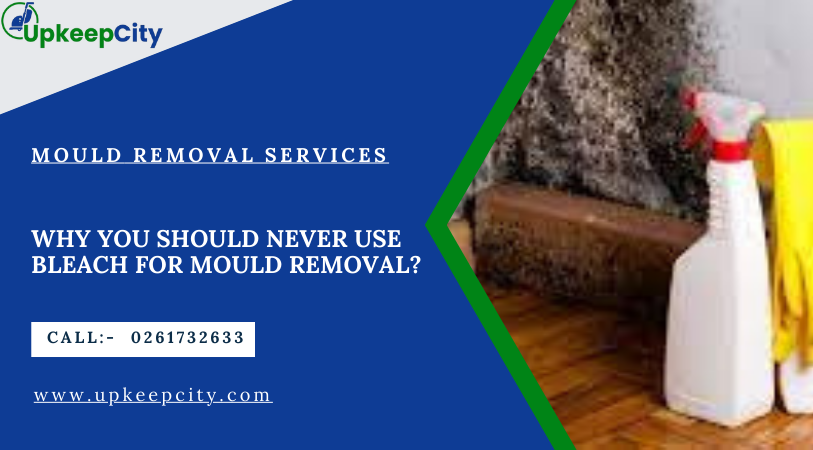Why You Should Never Use Bleach for Mould Removal?
Bleach has been the standard treatment for mould removal for many years. In actuality, many cleaning websites continue to advise it.
But here is why bleach is ineffective for treating mold.
Why Mould is such a health risk?
Mold may not be aesthetically pleasing, but it can harm your health. Mycotoxins, which are toxic to people and can cause symptoms similar to hay fever and respiratory illnesses and may even impair your body’s immune system, are produced by some mold species. Mold infection risk is higher in people with compromised immune systems and chronic lung diseases.
What is the ideal method of treating mold?
People have believed bleach to be the most effective mold treatment for generations, but modern technology and increased knowledge in the field have changed that belief. Here is what transpires. Even though it may appear that the mould has been removed after bleach cleaning, all that has happened is that the bleach has faded the mold’s color. Under the wall’s surface, the moulded membrane is still alive and spitting out mycotoxins and mold spores that are sickening people. It is just no longer visible. Mould will return soon and quickly.
How to remove mould?
With one of these natural remedies, small mold patches can be effectively treated. When treating mold, we suggest donning a full-face mask and gloves.
-
The Vinegar Approach.
Mould can be effectively treated with vinegar, as is well known. Apply vinegar directly to the area using a spray bottle filled with high concentration. Use a soft-bristled nylon brush to stir up mold in areas with a lot of it. Allow the vinegar to remain on the mould for an hour to do its magic. A clean, slightly damp cloth should be used to remove the mold.
-
The tea tree oil remedy.
Tea tree oil has excellent anti-fungal properties and will efficiently treat mould. But it’s not a good cleaner. One teaspoon of tea tree oil mixed with two cups of warm water yields a solution with a concentration of 3 percent. Before use, shake thoroughly. Apply the mixture to the mold-affected area using a spray bottle after combining the ingredients. Use warm water and a sponge to scrub the mould off after 20 minutes gently. If the mould stain is still present, apply vinegar.
-
The remedy is based on clove oil.
Mold can be successfully treated with clove oil as well. Pour one liter of water and one-fourth teaspoon of clove oil into a spray bottle. Mist the area sparingly and let it sit overnight. Use a concentrated solution of white vinegar and water that is 1 to 1.
Few things to keep in mind regarding clove oil:
- Take caution, as it can be toxic to both humans and animals who consume it.
- As too much can discolor surfaces, carefully adhere to the above-mentioned measurements.
How to deal with widespread infestations of mould?
If the mould-affected area is larger than 1 square meter, the mould is likely growing in challenging-to-access locations like wall cavities.
A severe mould problem will require remediation by experts like Upkeepcity which can treat the mold and the mold spores the infestation produces.
Even though a professional can treat the mould, you will also need to address the moisture source (such as leaking pipes or a roof problem) that is the cause of the mould.
Mould removal specialist in your location might offer some general guidance, but you’ll need to hire a builder or plumber to locate the moisture source to ensure the mold doesn’t return.
How can I safely remove mould?
Wearing a respirator mask and safety goggles while cleaning mould is important because mould can harm our health. High health risks are associated with larger mold contamination areas, so we advise seeking professional advice. Sydney residents can call at 0261732633 to make an appointment with upkeepcity’s mould removal Sydney experts

Leave a Reply